If you’re a nature lover or an animal enthusiast, you might be interested in discovering different types of animals that Start with C. From common creatures like cats and cows to exotic species like capybaras and caracals, the animal kingdom never fails to amaze us with its diversity. In this blog post, we’ll take you on a journey through some of the most interesting animals that start with the letter C.
All Animals That Begin With C
- Cat
- Clouded Leopard
- Canaan Dog
- Caterpillar
- Crab
- Coral
- Cheetah
- Camel
- Cesky Fousek
- Cooper’s Hawk
- Common Toad
- Coyote
- Cichlid
- Caiman Lizard
- Curly Coated Retriever
- Cuscus
- Chow Chow
- Crocodile
- Common Loon
- Common Buzzard
- Chimpanzee
- Chesapeake Bay Retriever
- Cuttlefish
- Crane
- Chamois
- Capybara
- Chameleon
- Catfish
- Caracal
- Carolina Dog
- Cotton-top Tamarin
- Chinstrap Penguin
- Clownfish
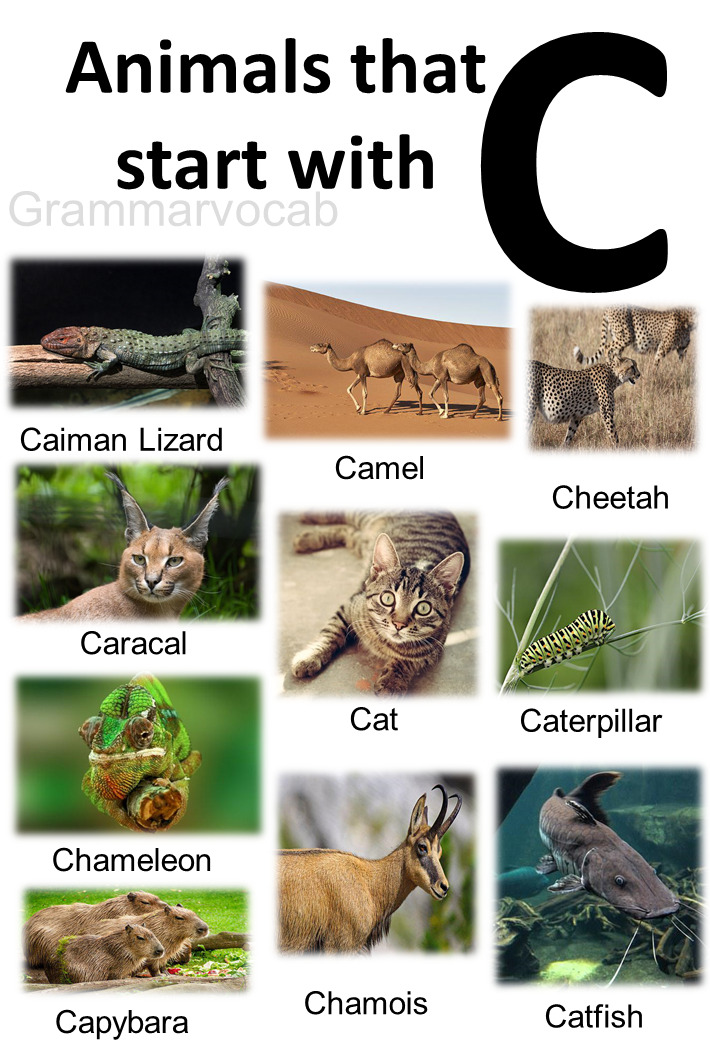
Must Learn: All Animals That Start With D
Animals Starting With C
- Chinook
- Chipmunk
- Chimaera
- Cross River Gorilla
- Cassowary
- Clumber Spaniel
- Coati
- Cougar
- Chinese Crested Dog
- Chihuahua
- Cockatoo
- Cockroach
- Collared Peccary
- Colossal Squid
- Collie
- Crested Penguin
- Common Frog
- Cow
- Camel Spider
- Centipede
- Cairn Terrier
- Cavalier King Charles Spaniel
- Chicken
- Canadian Eskimo Dog
- Crab-eating Macaque
- Caiman
- Chinchilla
Download Animals Name That Start With C
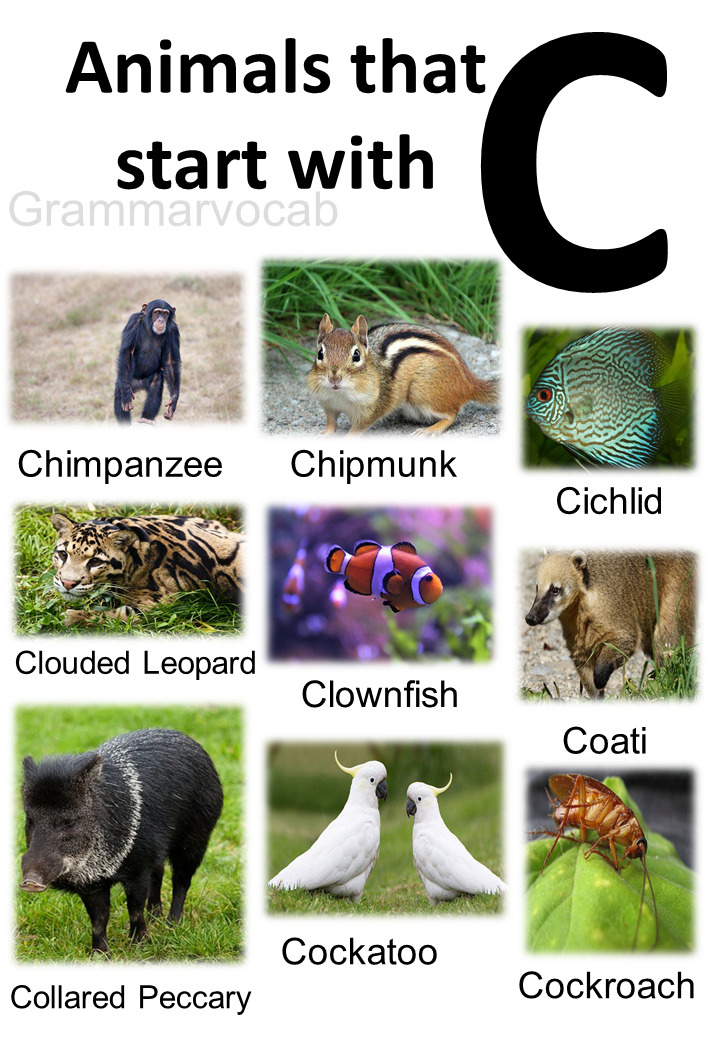

Animals That Start With C Facts And Images
Camel
- Camels are known for their ability to store large amounts of water in their humps, but their humps actually store fat, which can be broken down into water and energy when needed.
- There are two main species of camels: the dromedary or Arabian camel, which has one hump, and the Bactrian camel, which has two humps.
- Camels are well adapted to survive in harsh desert environments, with features like long eyelashes, wide feet that don’t sink in the sand, and the ability to close their nostrils to prevent sand from getting in.
- The average lifespan of a camel is 40 to 50 years.
- Camels are social animals and live in groups called caravans.
- Camels have a third eyelid that helps protect their eyes from blowing sand and dust.
- The humps on a camel’s back are not only used for storing fat, but they also help regulate the animal’s body temperature by reducing the amount of heat that is absorbed by their body.
- Camels can drink up to 40 gallons of water in one sitting and can survive for up to 10 months without water.
- The milk of camels is high in protein and is a staple food in many desert cultures.
- Camels are used for transportation, milk, meat, and wool, and have been domesticated for over 4,000 years.
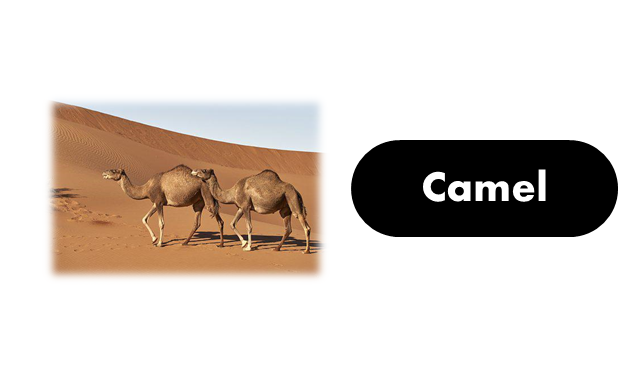
Capybara
Capybaras are the largest rodents in the world and are native to South America. Here are some interesting facts about them:
- Capybaras are semi-aquatic animals and are excellent swimmers. They have webbed feet and can hold their breath underwater for up to five minutes.
- They are social animals and are usually found living in groups of 10 to 20 individuals, although groups of up to 100 have been observed.
- Capybaras are herbivores and primarily eat grasses and aquatic plants. They also occasionally eat fruits and vegetables.
- They have a unique digestive system that allows them to extract nutrients from tough, fibrous plant material. They also practice coprophagy or eating their own feces, to aid in digestion.
- Capybaras are preyed upon by a variety of predators, including jaguars, anacondas, and caimans.
- They have very strong teeth that are self-sharpening and use them to defend themselves against predators.
- Capybaras communicate with each other through a variety of vocalizations, including barks, whistles, and purrs.
- They are often kept as pets in South America and some parts of the United States, although they require a lot of space and special care.
- Capybaras have been used in medical research because they are able to carry certain diseases without getting sick themselves.
- Capybaras are considered a delicacy in some parts of South America and are hunted for their meat and skin. However, they are also protected by law in many areas due to their important role in local ecosystems.
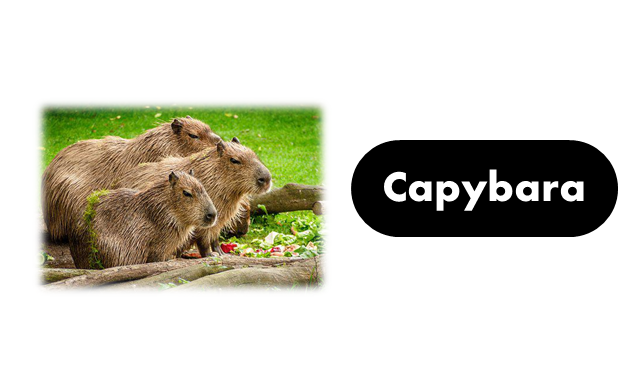
Caracal
The caracal is a medium-sized wild cat native to Africa, the Middle East, and parts of Central Asia. Here are some interesting facts about this elusive feline:
- Caracals are sometimes referred to as the “desert lynx,” although they are not actually closely related to the lynx.
- They are known for their distinctive tufted ears, which are believed to help them detect prey and communicate with other caracals.
- Caracals are highly skilled hunters and are able to take down prey much larger than themselves, including birds, rodents, and small antelopes.
- They are solitary animals and are most active at night, although they may also hunt during the day in cooler weather.
- Caracals are excellent climbers and can scale trees and cliffs with ease.
- They have a flexible spine that allows them to rotate their hind feet nearly 180 degrees, which helps them to change direction quickly when chasing prey.
- Caracals are not currently considered endangered, although they are threatened by habitat loss and hunting in some parts of their range.
- They are sometimes kept as pets, although this is illegal in many countries and can be dangerous, as caracals are still wild animals with powerful instincts.
- In ancient Egypt, caracals were trained for hunting and were highly prized for their ability to catch birds in flight.
- Caracals have been known to form temporary hunting alliances with other predators, such as jackals and hyenas, in order to increase their chances of catching prey.
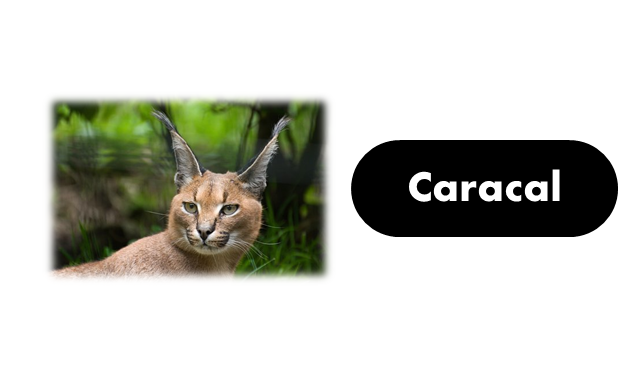
Cat
Cats are one of the most popular pets in the world and have been domesticated for thousands of years. Here are some interesting facts about them:
- There are over 100 breeds of domestic cats, ranging in size from tiny teacup cats to large breeds like the Maine Coon.
- Cats are carnivores and require a diet high in protein. They are obligate carnivores, which means they require specific nutrients that are only found in animal tissue.
- Cats have excellent hearing and can hear high-pitched sounds that are beyond the range of human hearing.
- They are also very agile and can jump up to six times their body length in a single bound.
- Cats are known for their grooming habits and spend a significant amount of time each day cleaning themselves.
- They are social animals and form strong bonds with their owners, although they are also independent and enjoy their alone time.
- Cats communicate with each other and with humans through a variety of vocalizations, including meows, purrs, and hisses.
- They have a keen sense of smell and use scent markings to communicate with other cats.
- Cats are crepuscular, which means they are most active at dawn and dusk.
- While cats are typically known for their soft fur and playful personalities, they also have a reputation for being skilled hunters and have been known to catch and kill birds, rodents, and other small animals.

Crab
Crabs are a type of crustacean that lives in a variety of aquatic environments, from the deep sea to freshwater streams. Here are some interesting facts about them:
- There are over 6,700 species of crabs, ranging in size from the tiny pea crab to the giant Japanese spider crab, which can have a leg span of over 12 feet.
- Crabs have a hard exoskeleton that protects their bodies from predators and helps them to conserve water.
- They are omnivores and will eat a wide variety of food, including algae, mollusks, fish, and even other crabs.
- Crabs have two claws, which they use for defense, capturing prey, and communication.
- They are able to regenerate lost limbs, although the new limb may be smaller than the original.
- Some species of crab are able to swim, while others crawl along the ocean floor using their legs.
- Crabs are an important part of many aquatic ecosystems and help to control populations of other animals.
- Female crabs are often smaller than males but have a wider abdomen to accommodate their eggs.
- Some species of crab can change color to blend in with their surroundings and avoid predators.
- Crabs are a popular seafood item and are eaten in many cultures around the world.
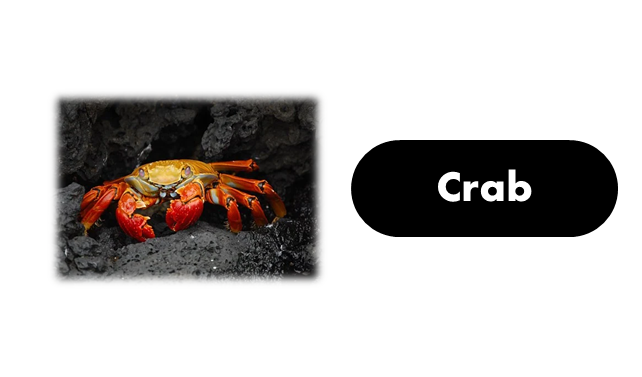
Cheetah
The cheetah is a large, slender feline known for its speed and agility. Here are some interesting facts about cheetahs:
- Cheetahs are the fastest land animal, capable of running up to speeds of 70 miles per hour (113 kilometers per hour) over short distances.
- They are found in parts of Africa and Iran and are classified as vulnerable due to habitat loss and human-wildlife conflict.
- Cheetahs have a distinctive spotted coat, which helps them blend in with their grassland and savannah habitats.
- They are solitary animals and hunt during the day, often targeting small mammals like gazelles, hares, and impalas.
- Cheetahs are able to accelerate from 0 to 60 miles per hour (97 kilometers per hour) in just a few seconds.
- They have non-retractable claws, which provide traction while running and help them to grip their prey.
- Cheetahs are the only big cats that purr, and they use a variety of vocalizations to communicate with each other.
- They have excellent eyesight and are able to spot prey from a distance of up to three miles (five kilometers) away.
- Cheetahs are able to reproduce at a young age and have a short gestation period of only 90-95 days.
- Cheetahs are often depicted in popular culture as symbols of speed and agility and have been featured in movies, advertisements, and other media.

Crocodile
Crocodiles are large, semi-aquatic reptiles found in tropical and subtropical regions around the world. Here are some interesting facts about them:
- There are 23 different species of crocodile, ranging in size from the dwarf crocodile, which grows up to 5 feet (1.5 meters) long, to the saltwater crocodile, which can grow up to 23 feet (7 meters) long.
- Crocodiles are apex predators and have a powerful bite, which they use to catch and kill prey.
- They are cold-blooded and regulate their body temperature by basking in the sun or cooling off in the water.
- Crocodiles are able to stay underwater for extended periods of time, thanks to a specialized valve in their throat that allows them to close off their airway.
- They are able to run on land at speeds of up to 20 miles per hour (32 kilometers per hour), making them one of the fastest reptiles on land.
- Crocodiles are able to communicate with each other using a variety of vocalizations, including grunts, hisses, and roars.
- They have a lifespan of up to 70 years in the wild.
- Crocodiles are opportunistic feeders and will eat a wide variety of prey, including fish, birds, mammals, and even other crocodiles.
- Female crocodiles lay their eggs in a nest made of vegetation and will guard the nest fiercely until the eggs hatch.
- Crocodiles are often revered in many cultures around the world and are sometimes worshipped as deities.

Chimpanzee
Chimpanzees are a species of great ape that live in tropical forests and savannas across central and West Africa. Here are some interesting facts about chimpanzees:
- Chimpanzees are the closest living relatives to humans, sharing 98% of our DNA.
- They are highly social animals and live in communities of up to 100 individuals, led by a dominant male.
- Chimpanzees are known for their intelligence, using tools like sticks and rocks to forage for food, communicate with each other, and solve problems.
- They have a lifespan of up to 50 years in the wild.
- Chimpanzees have opposable thumbs and are able to grip objects with their hands, making them highly dexterous.
- They are omnivores and eat a variety of foods, including fruits, insects, nuts, and small mammals.
- Chimpanzees are able to communicate with each other using a complex system of vocalizations and gestures.
- They are able to learn from each other, and different communities of chimpanzees have been observed using different cultural practices, such as using specific tools to extract insects from trees.
- Female chimpanzees give birth to a single offspring after a gestation period of around 8 months.
- Chimpanzees are an endangered species, threatened by habitat loss, hunting, and disease. Conservation efforts are underway to protect their populations and habitats.

Crane
Cranes are large, long-legged birds found in wetlands, grasslands, and forests around the world. Here are some interesting facts about cranes:
- There are 15 different species of crane, ranging in size from the small demoiselle crane, which stands at around 3 feet (1 meter) tall, to the large sarus crane, which can grow up to 6 feet (1.8 meters) tall.
- Cranes are highly migratory birds, with some species traveling up to 8,000 miles (12,875 kilometers) each year between their breeding and wintering grounds.
- They are known for their elaborate courtship dances, which involve leaping, bowing, and calling.
- Cranes are omnivores, eating a diet of insects, plants, small mammals, and fish.
- They have a long lifespan, with some species living up to 40 years in the wild.
- Cranes are known for their distinctive vocalizations, which include trumpeting calls and rattling sounds.
- They are monogamous, forming pair bonds that can last for life.
- Cranes build large, elaborate nests made of sticks, reeds, and grasses, often in wetland areas.
- They are important cultural symbols in many cultures around the world and are sometimes associated with longevity, wisdom, and good luck.
- Several species of crane are threatened or endangered due to habitat loss, hunting, and other human activities. Conservation efforts are underway to protect their populations and habitats.
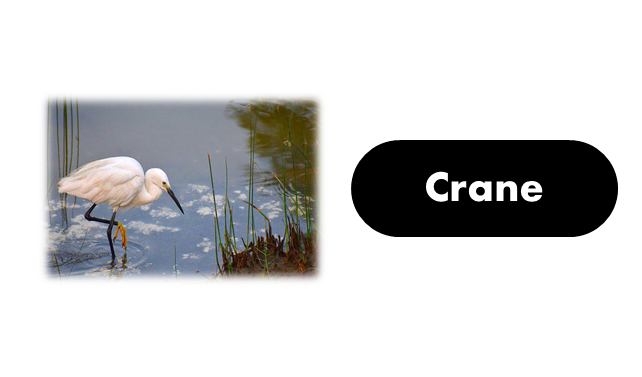
Cow
Cows are domesticated mammals that are kept as livestock for their meat, milk and hides. Here are some interesting facts about cows:
- There are hundreds of different breeds of cow, with different colors, sizes, and patterns.
- Cows are social animals and form strong bonds with other members of their herd.
- They are herbivores, with a diet consisting mainly of grass and hay.
- Cows have four stomachs, which allows them to digest tough plant fibers more efficiently.
- They are able to produce up to 8 gallons (30 liters) of milk per day, which is used to make a variety of dairy products like cheese, butter, and yogurt.
- The average lifespan of a cow is around 20 years.
- Cows communicate with each other using a variety of vocalizations and body language.
- They have a strong sense of smell and are able to recognize individual members of their herd by scent.
- Cows are intelligent animals and are able to learn and remember things like the location of food and water sources.
- Cows are often used in agriculture for plowing fields and pulling carts, as well as for their meat and milk.




